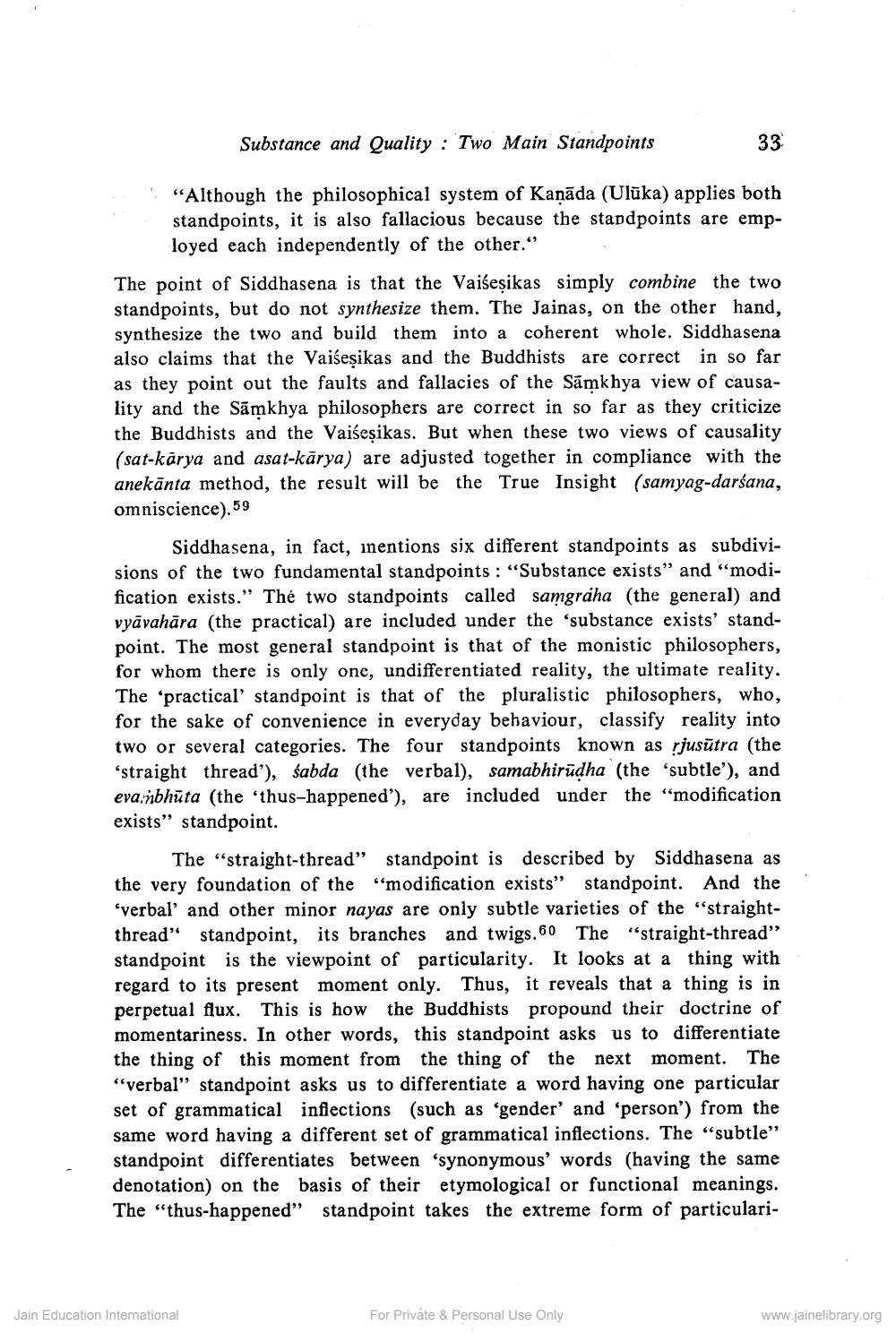________________
Substance and Quality : Two Main Standpoints
33
“Although the philosophical system of Kaņāda (Ulūka) applies both standpoints, it is also fallacious because the standpoints are emp
loyed each independently of the other." The point of Siddhasena is that the Vaiseșikas simply combine the two standpoints, but do not synthesize them. The Jainas, on the other hand, synthesize the two and build them into a coherent whole. Siddhasena also claims that the Vaiseșikas and the Buddhists are correct in so far as they point out the faults and fallacies of the Sámkhya view of causality and the Sāmkhya philosophers are correct in so far as they criticize the Buddhists and the Vaiseșikas. But when these two views of causality (sat-karya and asat-karya) are adjusted together in compliance with the anekānta method, the result will be the True Insight (samyag-darśana, omniscience).59
Siddhasena, in fact, inentions six different standpoints as subdivisions of the two fundamental standpoints : "Substance exists” and “modification exists." Thé two standpoints called samgraha (the general) and vyāvahāra (the practical) are included under the 'substance exists' standpoint. The most general standpoint is that of the monistic philosophers, for whom there is only one, undifferentiated reality, the ultimate reality. The 'practical' standpoint is that of the pluralistic philosophers, who, for the sake of convenience in everyday behaviour, classify reality into two or several categories. The four standpoints known as rjusūtra (the 'straight thread'), śabda (the verbal), samabhirudha (the 'subtle'), and eva.nbhūta (the 'thus-happened'), are included under the “modification exists” standpoint.
The “straight-thread" standpoint is described by Siddha sena as the very foundation of the “modification exists” standpoint. And the ‘verbal and other minor nayas are only subtle varieties of the "straightthread" standpoint, its branches and twigs. 60 The “straight-thread” standpoint is the viewpoint of particularity. It looks at a thing with regard to its present moment only. Thus, it reveals that a thing is in perpetual flux. This is how the Buddhists propound their doctrine of momentariness. In other words, this standpoint asks us to differentiate the thing of this moment from the thing of the next moment. The "verbal” standpoint asks us to differentiate a word having one particular set of grammatical inflections (such as 'gender' and 'person') from the same word having a different set of grammatical inflections. The "subtle" standpoint differentiates between 'synonymous' words (having the same denotation) on the basis of their etymological or functional meanings. The "thus-happened" standpoint takes the extreme form of particulari
Jain Education International
For Private & Personal Use Only
www.jainelibrary.org




